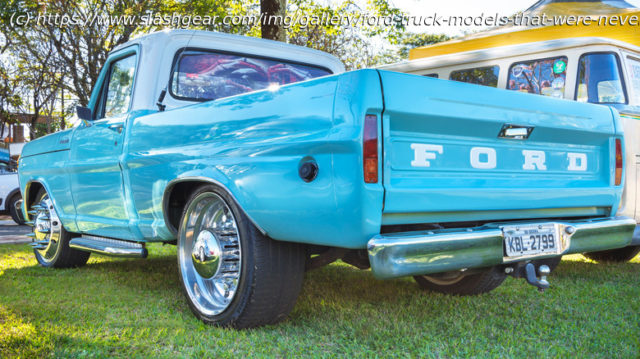Ford has a long history making trucks, but while most served in the company’s home country, not many known that a few models never got to the U.S.
The American automotive landscape isn’t just about SUVs and sedans — pickup trucks make up a massive part of it. According to the Global Market Insights report, the U.S. pickup truck market was valued at $215.6 billion in 2024 and is expected to gain momentum, reaching $302.8 billion by 2034. This tremendous growth is largely attributed to brands shifting towards electric energy. For many Americans, a pickup truck is not only a vehicle — it is a versatile asset. Beyond every day commuting, it can also perform heavy-duty tasks such as towing boats, hauling trailers, or carrying large loads.
In contrast to the U.S., pickup trucks have never achieved the same popularity in Europe, where narrow streets and high fuel costs limit their appeal. The first pickup truck is credited to Henry Ford, who introduced the 1925 Model T Roadster with a pickup body — the first factory-built pickup truck of its kind. Ford is also credited with popularizing the term « pickup. » Since then, this segment has evolved dramatically. While not every model has been pleasing to the eye, there are a lot of options available that have earned a reputation for being the most reliable.
Ford continues to offer a wide range of pickup trucks in the U.S., but interestingly, not every Ford pickup has been available stateside. Some models were sold exclusively overseas, where they found considerable success. This article highlights the Ford pickup trucks that U.S. fans never got to drive.Ford F-1000
In the U.S. and North America, you might’ve heard a lot about the Ford F-150, F-250, F-350, and so on. However, you might’ve never heard of the Ford F-1000, and that’s because it was an F-series Ford pickup truck meant only for Brazil. The Ford F-1000, which arrived in Brazil in 1979, used the body and chassis of the fifth-generation Ford F-250, with an increased load capacity of 1,000 kg, a little over 2,200 pounds. Interestingly, while Ford ceased the production of the fifth-generation F-250 in 1972 in the U.S., its body continued to be used by Ford in Brazil until 1992.
Out of the factory, the F-1000 was offered only in regular cab configuration and only with rear-wheel drive. The 1979 model came with a 3.9-liter four-cylinder engine that produced 86.4 hp. Since Ford increased the load capacity to 1,000 kg, the suffix ‘1000’ was added. In 1985, Ford introduced the F-1000A, featuring a 6-cylinder engine compatible with methanol. Later, Ford added a four-headlight with some interior updates in 1986, and in 1991, the four-cylinder engine received an intercooled turbo that pushed more horsepower, 119 hp to be exact.
The second-generation F-1000 launched in 1992 and introduced multiple changes to counter the competition from the Chevrolet D20, with the four-wheel drive option arriving in 1993. The F-1000 nameplate continued to exist for a few more years, after finally ceasing production in 1998, being replaced with the locally produced F-250.Ford Pampa
Brazil saw Ford launch several pickup trucks, but the credit for the only light pickup truck with four-wheel drive goes to the Ford Pampa. Ford built the Pampa from 1982 to 1997, and this truck was based on the Ford Corcel II, which was nothing but the Renault 12 with the Ford nameplate. Pampa was launched as a compact two-seater pickup truck, and its impressive fuel economy and low maintenance expense made it suitable for workers and everyday commuters.






